SUMMARY HIGHLIGHTS
- If you like the traditional side of Japan, then you’ll probably fall in love with Takayama.
- Hida Takayama hosts one of the most beautiful festivals in Japan – Takayama Matsuri. It’s held twice a year, in April and October.
- Takayama is the most convenient base for day trips to Shirakawa-go.
- Kobe who? Hida Beef is considered by many Japanese to be the best beef brand in Japan.
Don’t let Takayama’s size fool you. This mountain town in Gifu Prefecture may be small, but it’s one of the most captivating destinations you’ll visit in the Chubu region.
The first time I went to Takayama, I used it as a base to visit Shirakawa-go, but it didn’t take me long to realize that Takayama was more than just a convenient place to rest my head. It’s old town is one of the most well-preserved in Japan and serves as an ideal backdrop for one of the country’s most beautiful festivals – Takayama Matsuri.
I’ve been to Takayama twice now, both in winter, and I’m planning a third trip to attend my first Takayama Festival. I can only imagine how beautiful this place must be in the spring or fall.
As charming as it is, you won’t need more than a day or two to fully explore Takayama. But if Japan’s beautifully preserved towns do it for you, then that’s more than enough time to fall in love with this place like I did.
VISIT TAKAYAMA QUICK LINKS
To help you plan your trip to Takayama, I’ve put together links to top-rated hotels, tours, and other travel-related services here.
HOTELS
Recommended hotels near Takayama Station, the most convenient area to stay in Takayama.
- Luxury: Oyado Koto No Yume
- Midrange: Relax Hotel Takayama Station
- Budget: Chisun Grand Takayama
EXPERIENCES
- Sightseeing Tour: Private Walking Tour with a Local Guide
- Shirakawa-go Day Trip: Guided Day Trip to Takayama and Shirakawa-go
- Food Tour: Takayama Night Tour with Local Meal and Drinks
- Sake Tasting: Educational Tour of Six Takayama Breweries
- Hiking Tour: Hike and Cycle Through the Mountain Trails of Hida Takayama
- Cooking Class: Cooking Classes in Takayama
OTHER SERVICES
GUIDE TABLE OF CONTENTS
TAKAYAMA AT A GLANCE
With a population hovering around 85,000, Takayama is a small city nestled in the mountainous Hida region of Gifu Prefecture. It’s also referred to as Hida Takayama, to differentiate it from towns and villages of the same name.
Takayama came to prominence during the Edo Period for its exceptional timber and highly-skilled carpenters. Because of these resources, the Tokugawa Shogunate placed the town under its direct control. This would usher in a period of prosperity and transform Takayama into a town of wealthy merchants.
Today, Takayama’s heritage lives on in its beautifully preserved old town. It continues to be celebrated for its fine carpentry and woodworking craftsmanship, which take center stage at Takayama Matsuri, a biannual festival hailed by some as one Japan’s most beautiful.
BEST TIME TO VISIT TAKAYAMA
Thanks to its beautifully preserved old town and remote mountain location, a visit to Takayama is rewarding at any time of the year, but especially in spring and autumn for Takayama Matsuri. Held twice a year, the Takayama Festival is regarded by some as one of the three most beautiful festivals in Japan.
Takayama Matsuri is held in the spring (April 14-15) and fall (October 9-10) each year to celebrate the changing of the seasons and pray for (or give thanks to) a bountiful harvest. Both festivals feature ornate festival floats (yatai) and elaborate processions that showcase Takayama’s craftsmanship and cultural heritage.
WHERE TO STAY IN TAKAYAMA
Hida Takayama isn’t very big so staying within the city’s center will put you within walking distance of the city’s top places of interest. Most people will spend no more than one or two nights in Takayama so a hotel near Takayama Station will be convenient.
You can visit Booking.com and Agoda for hotel listings near Takayama Station. Here are some of the top-rated hotels in the area:
- Luxury: Oyado Koto No Yume
- Midrange: Relax Hotel Takayama Station
- Budget: Chisun Grand Takayama
THINGS TO DO IN TAKAYAMA
Step Back in Time in Sanmachi Suji
When you think back to your time in Hida Takayama, the first image that’ll come to mind is Sanmachi Suji. Located in the heart of the old town, it refers to a network of three streets regarded by many as one of the most beautifully preserved Edo Period districts in Japan.
Sanmachi Suji is noted for its well-preserved cypress and cedar houses, many of which have been converted to shops, restaurants, teahouses, and sake breweries. Some date back to the early 17th century when Takayama thrived as a town of wealthy merchants.
Walking around town, you’ll find that most of the buildings are painted in dark brown colors, almost black, to replicate how they looked during the Edo Period. Some of the buildings are over 400 years old but you wouldn’t know it from their remarkable state of preservation.
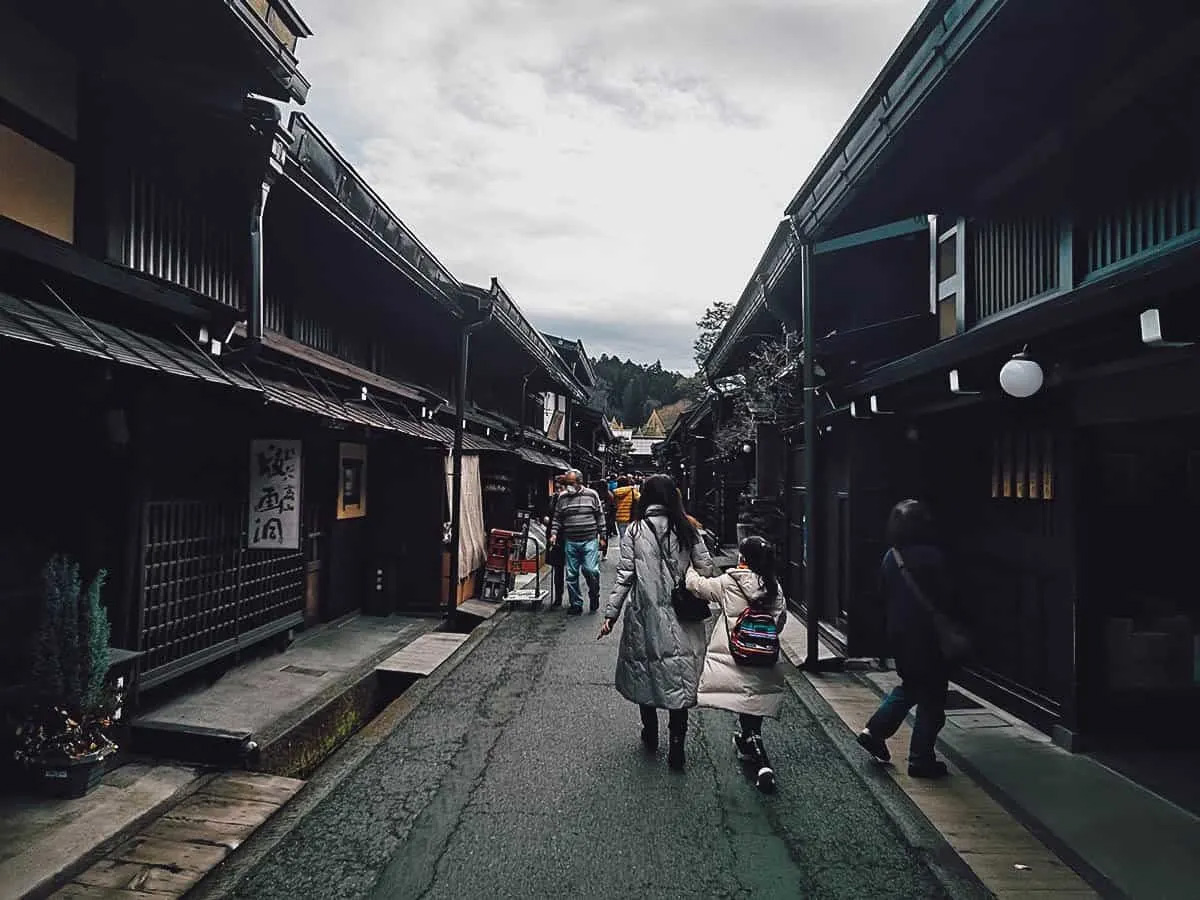
Make an Offering at a Shrine
Sakurayama Hachimangu Shrine may be devoid of people in the picture below but that won’t be the case come October. Like Hie Shrine, it plays a key role in the Takayama Festival.
The Spring Festival is dedicated to Hie Shrine in the southern half of Takayama while the Autumn Festival is held at Sakurayama Hachimangu Shrine in the northern part of the city. While the spring celebration seeks blessings for a fruitful agricultural season, the autumn festivities give thanks for a bountiful harvest.
Both shrines are located less than 2 km (1.2 miles) from Takayama Station and offer a peaceful escape from Sanmachi Suji outside of festival season.
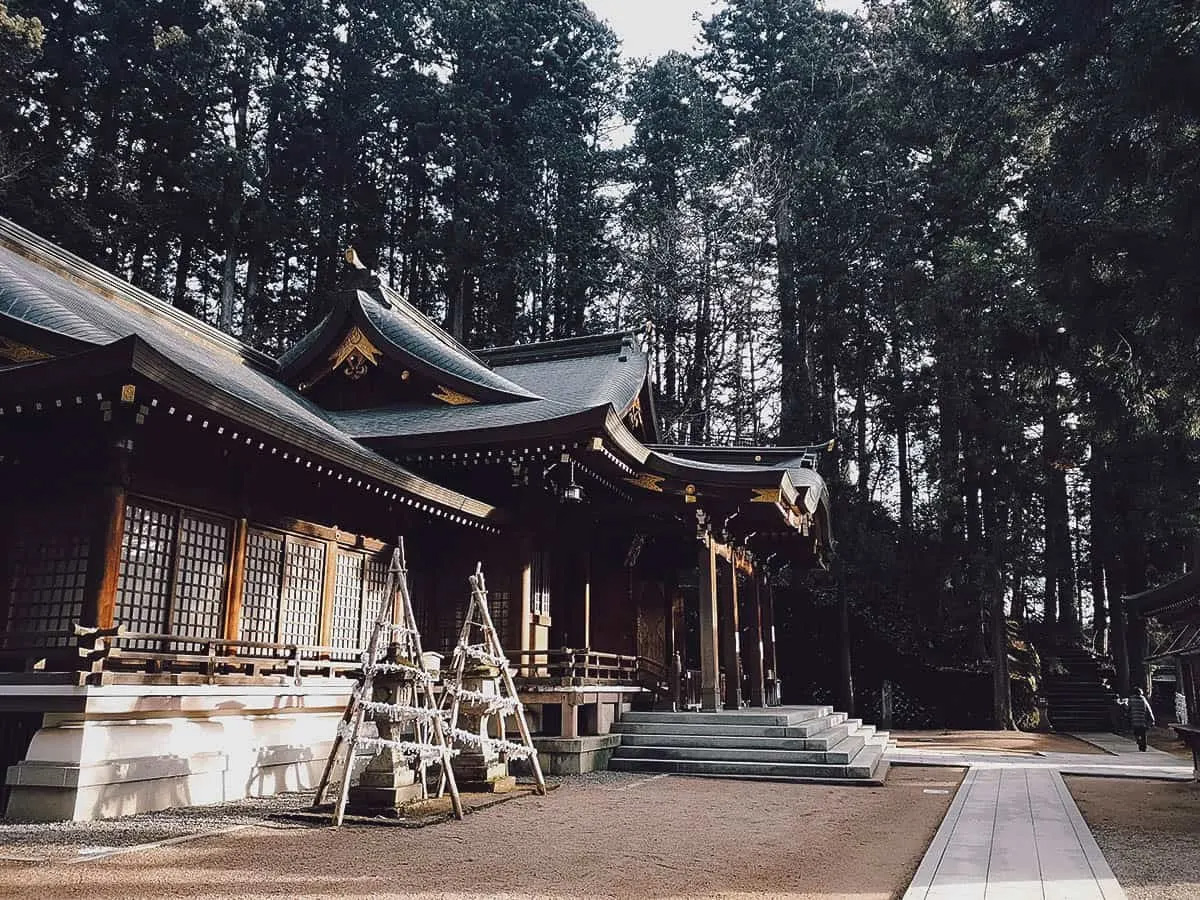
Admire Matsuri Floats Outside of Festival Season
Takayama woodworkers are known for their exceptional craftsmanship. From intricate wood carvings and mechanical puppets to lacquered surfaces with gold leaf embellishments, they showcase their skill through the elaborate floats they build for the festival each year.
If you’d like to see the floats but can’t visit Takayama in the spring or fall, then pay a visit to Matsuri no Mori or Takayama Matsuri Yatai Kaikan. Both museums display matsuri floats along with other key aspects of the festival like karakuri puppets and taiko drums.
Situated next to Sakurayama Hachimangu Shrine, Takayama Matsuri Yatai Kaikan is easier to get to but Matsuri no Mori (pictured below) may be the more interesting of the two. It’s located about a fifteen minute bus ride south of Takayama Station.
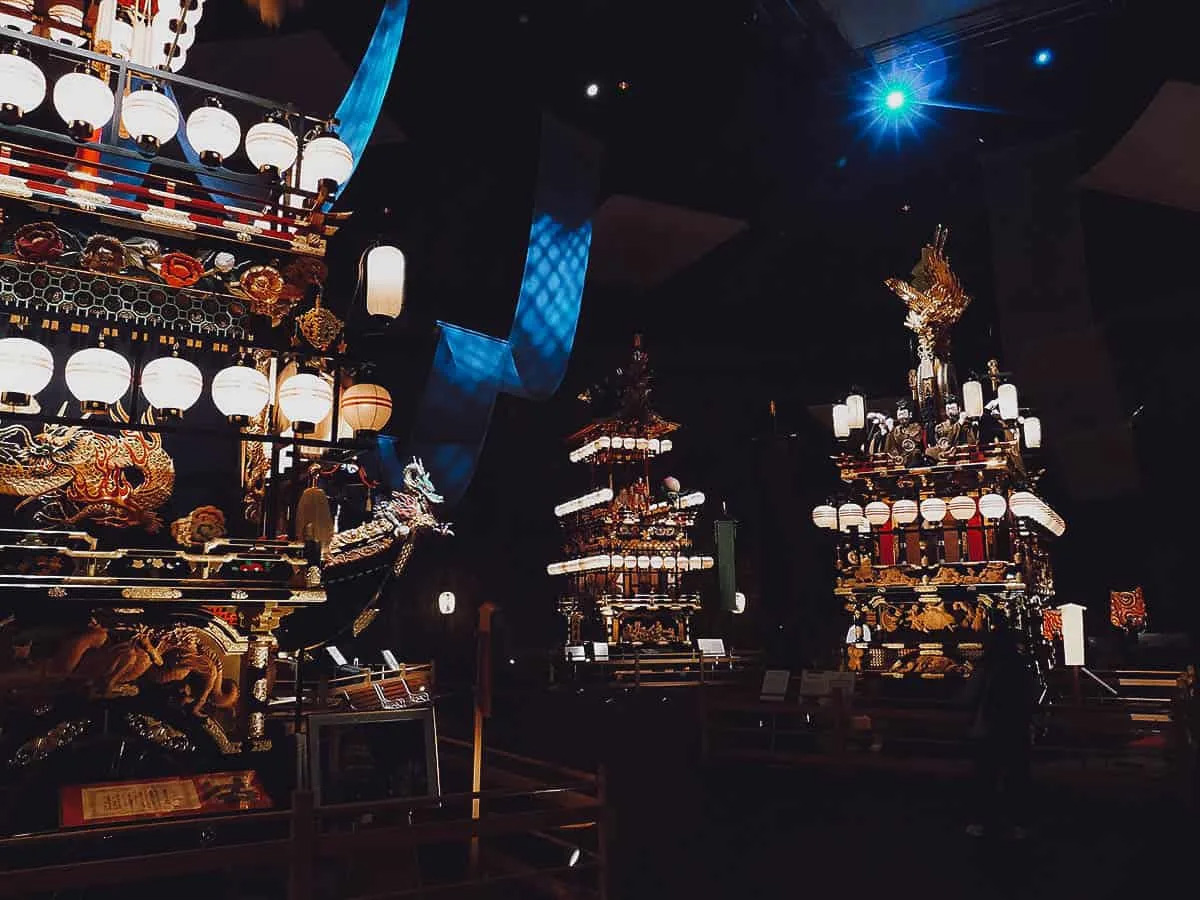
Photo by Pop Navy via Shutterstock
Explore Hida Folk Village
Many visitors to Takayama will probably make a day trip to Shirakawa-go, but if you have the time, then you may want to visit Hida Folk Village as well.
Known locally as Hida no Sato, Hida Folk Village is an open air museum that features over thirty traditional huts, storehouses, and gassho-zukuri farmhouses. They date back to the Edo Period and were moved from their original locations to create this museum in 1971.
Hida Folk Village is located about 2 km (1.2 miles) southwest of Takayama Station. It’ll take you around half an hour to get there on foot or ten minutes by bus. If you’d prefer to visit on a guided tour, then you can book one through Klook.
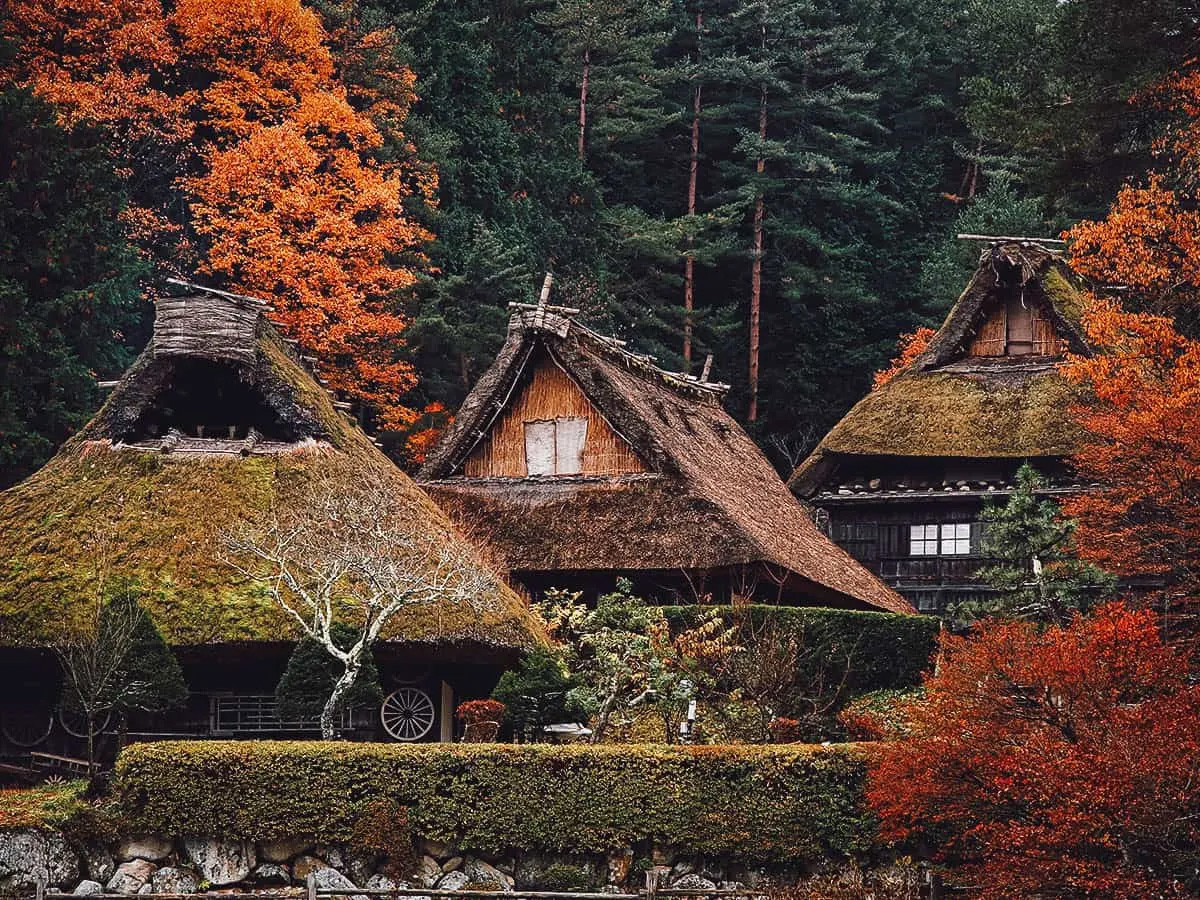
Photo by Various images via Shutterstock
Visit Takayama Jinya
Takayama Jinya was the former administrative headquarters of Hida Province during the Tokugawa Shogunate.
A jinya referred to the administrative headquarters of smaller domains. Similar to castles, they served as the residence of administrative heads though were much smaller in scale. Larger domains had castles while smaller domains, like Hida Province, had jinyas.
Takayama Jinya was declared a National Historic Site in 1929 and opened to the public as a museum in 1969. Inside are a series of well-maintained tatami mat rooms that once served as offices, conference rooms, and residential spaces for Edo period officials.
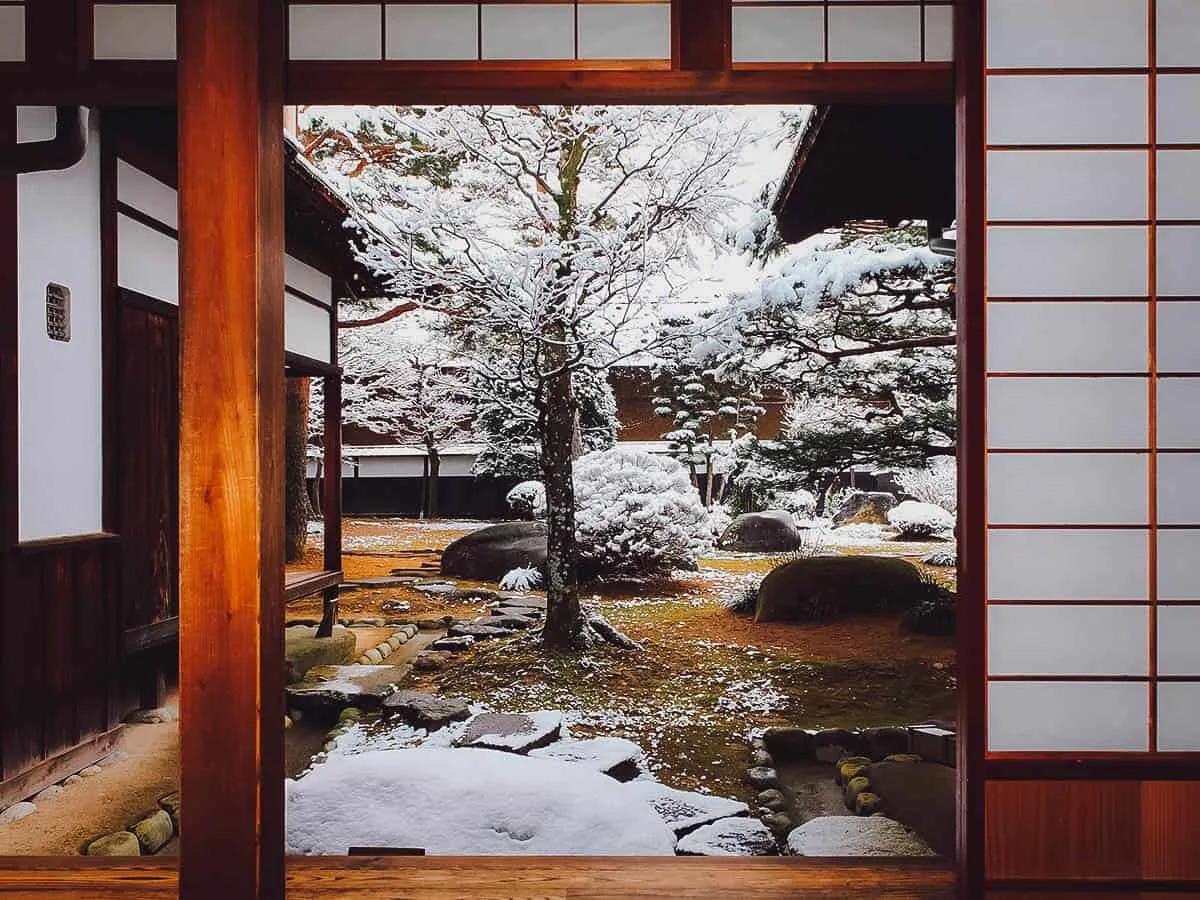
Photo by cowardlion via Shutterstock
Enjoy Some of Japan’s Best Beef
Take a quick stroll around Sanmachi Suji and you’ll quickly realize what Takayama’s delicacy is – Hida Beef. Almost every restaurant advertises some form of Hida Beef, whether it be Hida Beef skewers, Hida Beef croquettes, or most interesting of all, Hida Beef sushi.
Hida Beef refers to wagyu produced from black-haired Japanese cattle raised in Gifu Prefecture. Like Kobe Beef, it’s considered one of the most prized beef brands in Japan, revered for its intense marbling and juiciness.
I enjoyed Hida Beef in various dishes like croquettes, rice balls, steamed buns, and sausages, but my hands down favorite was the sushi. It’s so tender it practically dissolves in your mouth.
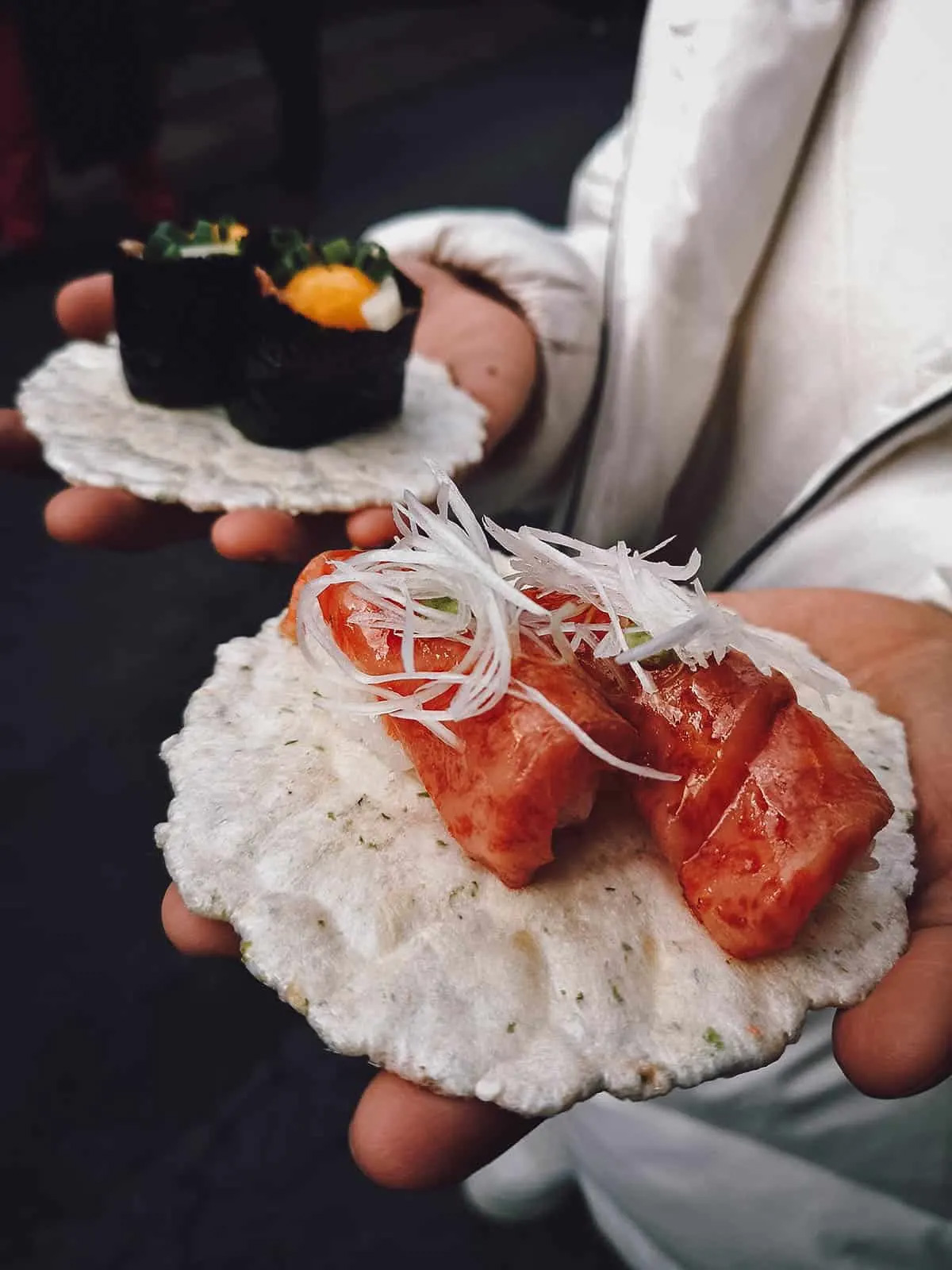
DAY TRIPS FROM TAKAYAMA
Takayama is small enough to visit on an overnight trip, but it does make for a convenient base for day trips.
Shirakawa-go
Shirakawa-go is a UNESCO World Heritage Site famous for its traditional gassho-zukuri farmhouses. It’s photogenic at any time of the year but in winter, covered by a thick blanket of snow, it could very well be the most beautiful village in all of Japan.
Shirakawa-go can be visited on a day trip from various cities in the central Chubu region, but one of the easiest and closest jumping-off points is Hida Takayama. From the bus terminal, it’s less than an hour to Shirakawa-go.
If you have a Takayama-Hokuriku Pass, then you’ll likely be visiting Shirakawa-go on your own. If you’d prefer to go with a guide from Takayama, then you can book a tour through Get Your Guide.
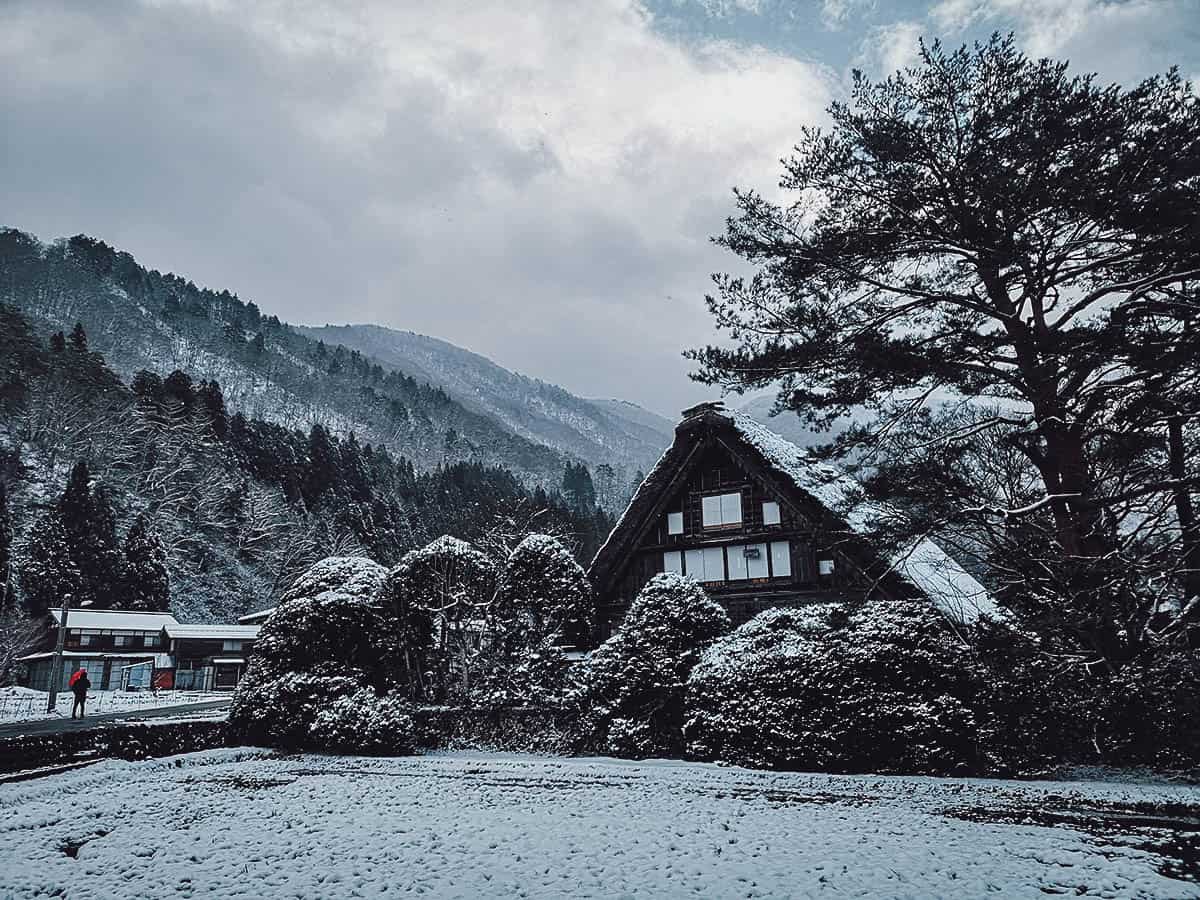
Hida Furukawa
Accessible via a quick 15-minute train ride from Takayama, Hida Furukawa is a small town with a similarly traditional feel. Like Takayama, it enjoyed a period of prosperity thanks to the region’s high-quality timber.
Compared to Takayama, Hida Furukawa receives far fewer tourists and is much quieter. When I was there, it felt like I was the only tourist in town, which is never a bad thing in Japan. While exploring Hida Furukawa, be sure to check out the koi fish swimming in the town’s canals.
Fans of the the hit anime film Kimi no Na wa will be pleased to learn that a few sequences from the film were based on actual locations in Hida Furukawa.
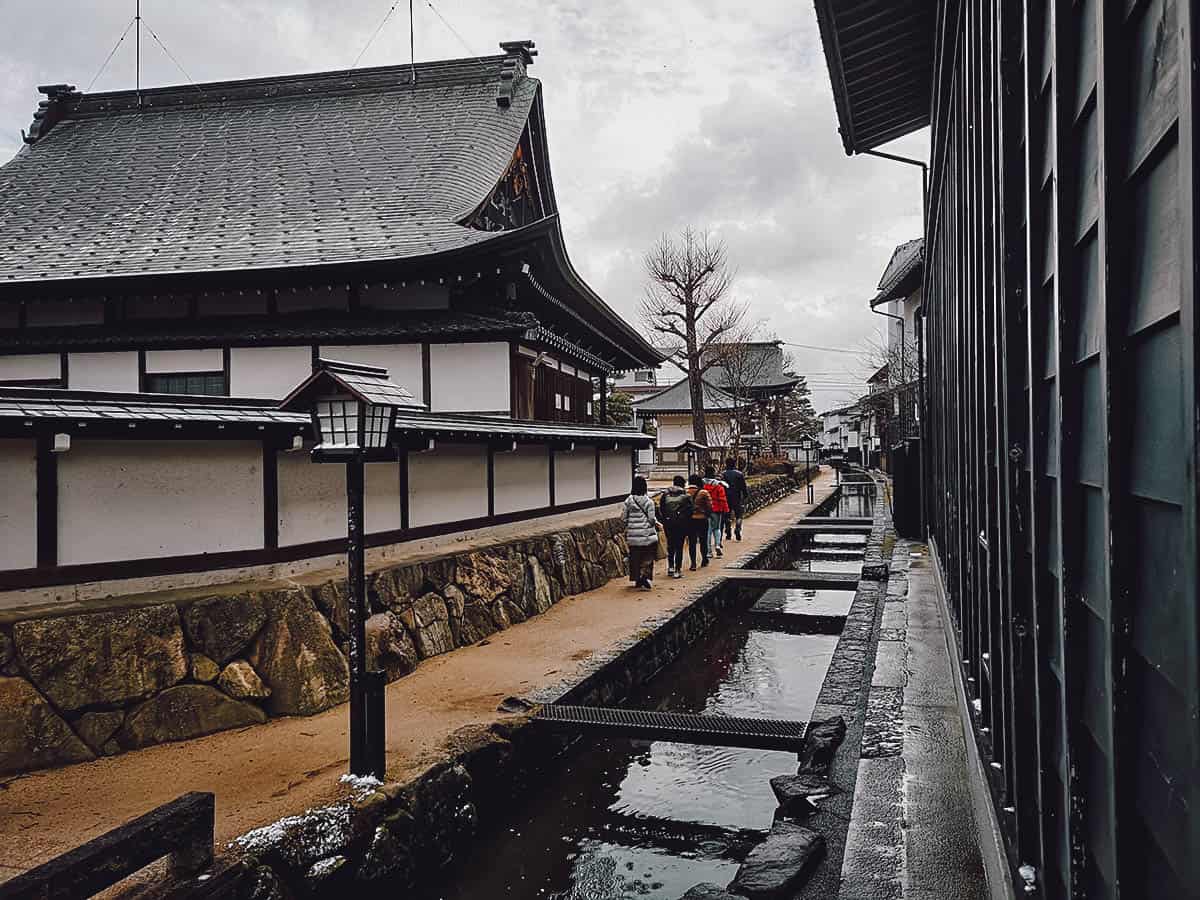
Kamikochi
If you enjoy the outdoors and visit Takayama outside of winter, then you may want to do some hiking in Kamikochi, a popular resort in the Northern Japan Alps of Nagano Prefecture. It’s known for its spectacular mountain scenery and easy hiking trails that become especially beautiful in autumn.
Accessible only by bus or taxi, you can reach Kamikochi by bus from Hida Takayama via Hirayu Onsen. The one-way trip takes around one and a half hours.
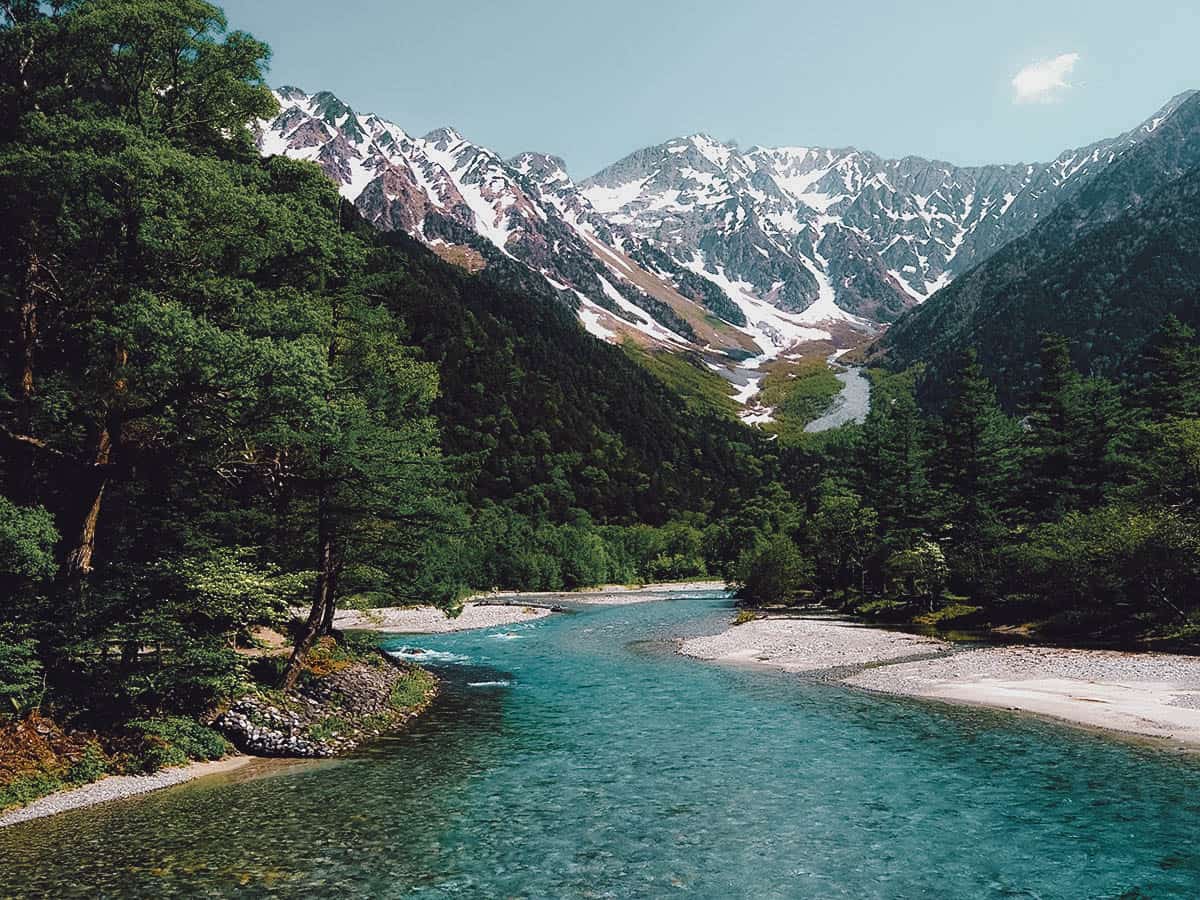
Photo by eye-blink via Shutterstock
Shinhotaka Ropeway
Kamikochi closes for the winter but that shouldn’t keep you from enjoying the snow-capped mountains of the Northern Japan Alps.
About an hour and a half northeast of Takayama is Shinhotaka Ropeway, a cable car that takes you up the Hotake Mountain Range to an altitude of around 2,150 meters (7,054 ft). The ropeway runs year-round but the views are particularly magical in winter.
Apart from offering some of the most spectacular winter views of Gifu’s Okuhida region, Shinhotoka Ropeway is unique in that it’s the only ropeway in Japan with double-decker gondola cars.
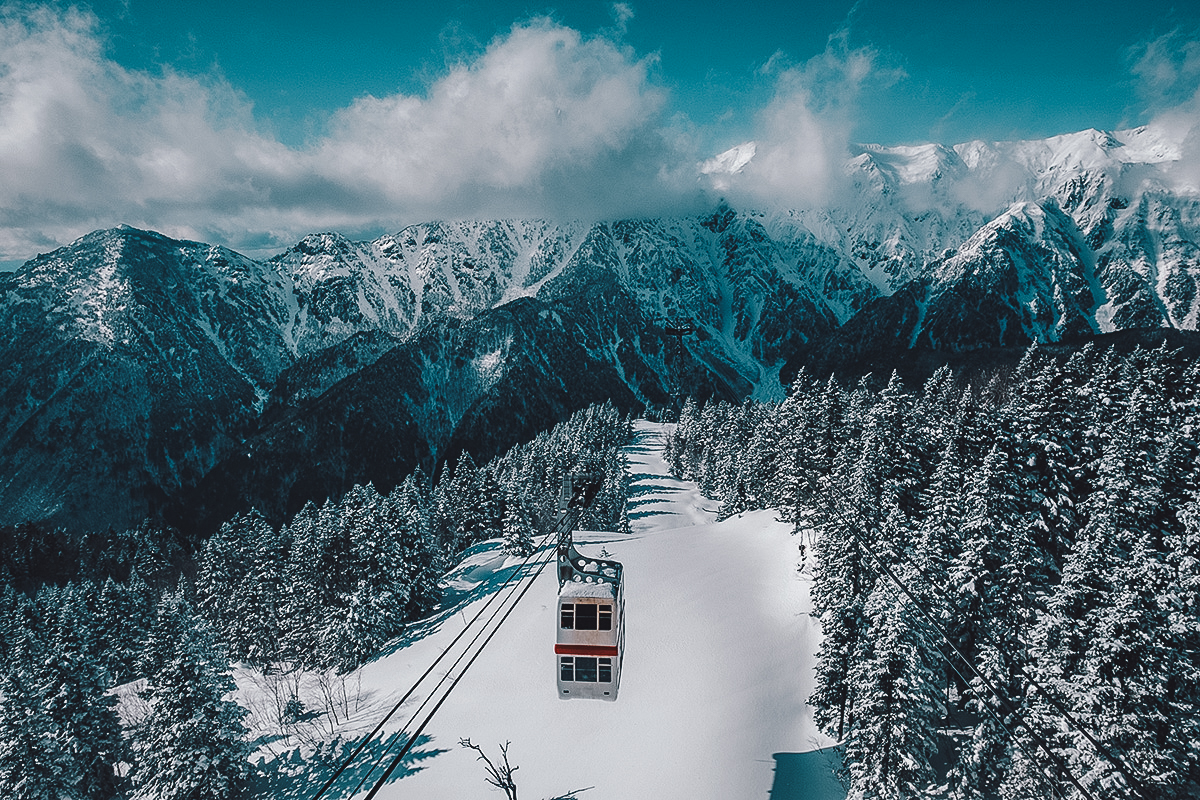
Photo by nuu_jeed via Shutterstock
Hirayu Onsen
Speaking of winter, I can’t think of a better way to end a cold day of sightseeing in Japan than soaking in an onsen. It’s relaxing, rejuvenating, and warms you to the core.
Gero Onsen is about an hour south of Takayama but people looking for a less urban onsen experience may want to head east to Okuhida instead. It’s a remote mountainous region famous for its hot springs and large outdoor baths.
There are a few onsen towns in Okuhida but the oldest and biggest is Hirayu Onsen. You can get there by bus from Takayama in a little over an hour.
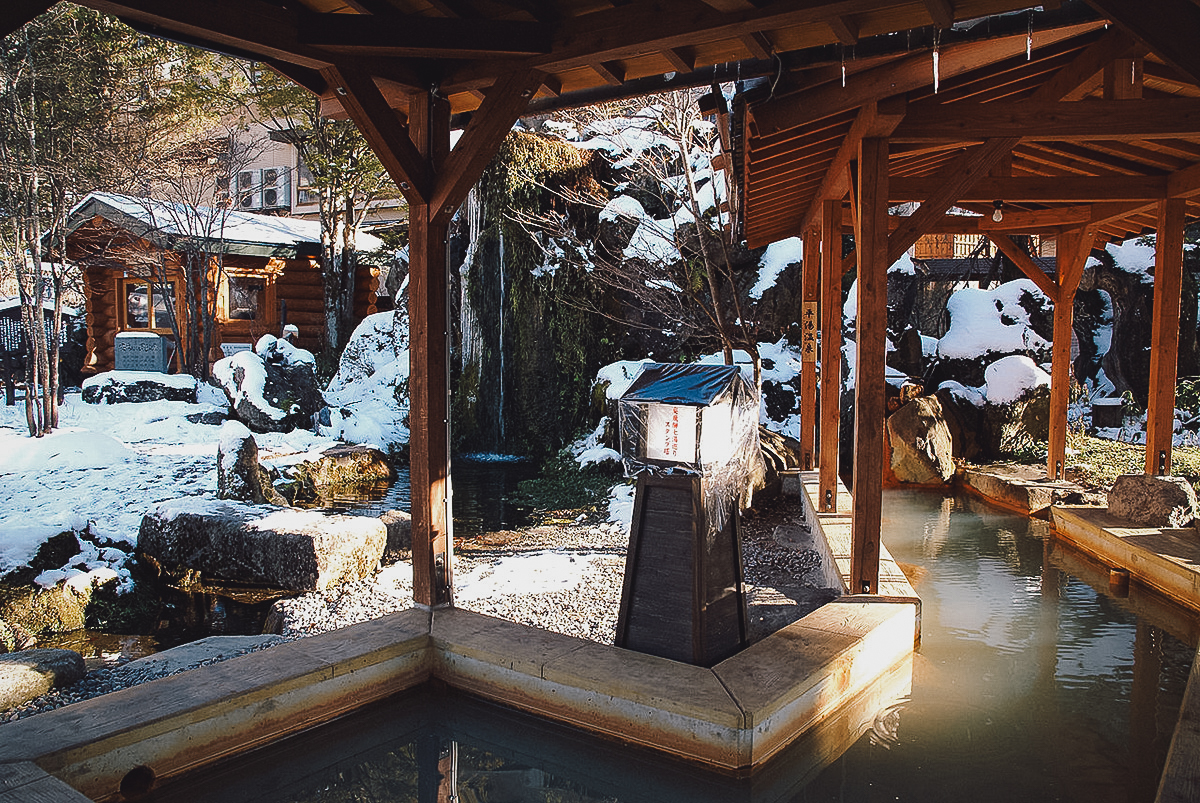
Photo by 663highland, CC BY-SA 3.0, via Wikimedia Commons / Processed in Photoshop and Lightroom
VISIT TAKAYAMA FAQs
Is Takayama worth visiting?
Yes, absolutely. Aside from being one of the most well-preserved towns in Japan, it also hosts one of its most beautiful festivals. Not just once but twice a year, during the most beautiful times of the year.
Its location in the mountains of Gifu Prefecture and its proximity to Shirakawa-go don’t hurt either.
Can I visit Takayama on a day trip from Tokyo?
No, as it’ll take you at least five hours to travel to Takayama by train and/or bus from Tokyo. The closest major city to Takayama is Nagoya, which is roughly two-and-a-half hours away.
How many days should I stay in Takayama?
Takayama is a small city so one full day is enough time to see its top tourist attractions. Stay longer if you plan on using it as a base for day trips.
Is the Takayama-Hokuriku Area Tourist Pass worth it?
Yes, but like any rail pass in Japan, it depends on how frequently you use it.
The Takayama-Hokuriku Area Tourist Pass offers unlimited rail travel in central Japan for five consecutive days. It covers JR train routes between major cities in the Chubu region (Kanazawa, Takayama, Nagoya, Toyama, etc) and extends to Osaka and Kyoto in the Kansai region. It also includes bus travel to Shirakawa-go and Gokayama.
If you plan on exploring the Chubu region, then the Takayama-Hokuriku Pass has the potential to save you money. You can use a JR fare calculator and Google Maps to estimate transportation costs. If it’s worth it, then you can purchase the pass in advance through Klook.
THE FINAL SAY
Hida Takayama may be small but it has a lot going for it, even outside of festival season. In some ways, its size works in its favor.
With just one full day, you can explore everything Takayama has to offer without feeling like you’ve missed anything. For travelers looking to maximize the value of their Takayama-Hokuriku Pass, this makes it an ideal stop before moving on to their next destination.
Disclosure
This Takayama travel guide contains affiliate links, meaning we’ll earn a small commission if you make a booking at no additional cost to you. As always, we only recommend products and services that we’ve used ourselves and can personally vouch for. We appreciate your support as it helps us make more of these free travel guides. Arigato gozaimasu!

